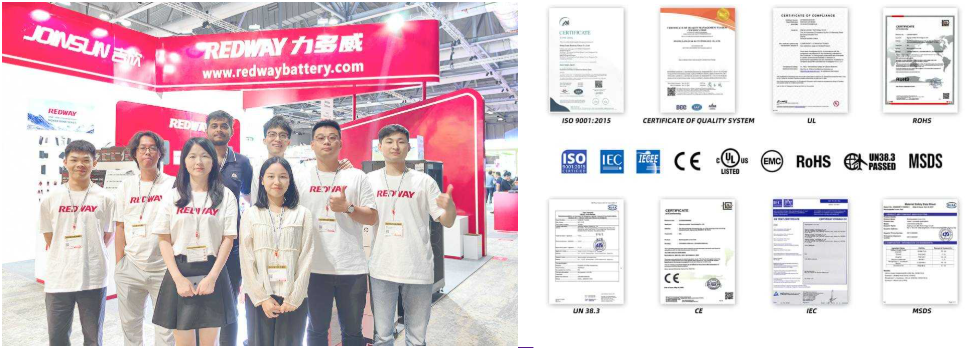18650 and 21700 power banks differ primarily in size and energy density. The 21700 battery has a larger physical size (21mm diameter, 70mm length) compared to the 18650 (18mm diameter, 65mm length), enabling higher capacity (4,000-6,000mAh vs. 2,500-3,500mAh) and better discharge rates. This makes 21700 models ideal for high-power devices like laptops, while 18650 suits smartphones and small gadgets.
Golf Cart License Requirements in Michigan
Which Offers Faster Charging Speeds?
21700 batteries support higher input/output currents (up to 45W PD) compared to 18650’s 18-25W limits. This allows 21700 power banks to charge devices like MacBooks 50% faster. However, both types require 4-6 hours for full recharging. Advanced 21700 models may include GaN tech for reduced heat and improved efficiency during high-speed charging.
Wholesale lithium golf cart batteries with 10-year life? Check here.
Real-world testing shows 21700 power banks can deliver 30W continuous output for 2.5 hours versus 18650’s 18W maximum for 1.8 hours. When charging a 13-inch MacBook Pro, 21700 units achieve 50% charge in 45 minutes compared to 65 minutes with 18650 models. The efficiency gap widens in cold environments – at 0°C, 21700 maintains 85% of its room-temperature charging speed versus 18650’s 72% performance. Recent GaN-equipped 21700 power banks show 92% energy conversion efficiency, reducing energy loss during high-speed transfers.
| Device | 21700 Charge Time | 18650 Charge Time |
|---|---|---|
| iPhone 15 Pro Max | 1h 10m | 1h 25m |
| MacBook Air M2 | 2h 15m | 3h 40m |
| Nintendo Switch | 1h 50m | 2h 30m |
What Are the Cost Differences?
21700 power banks cost 30-50% more than equivalent 18650 models. A 20,000mAh 21700 bank averages $60-$90, while 18650 equivalents cost $40-$60. The price premium reflects increased raw materials (nickel-rich cathodes) and advanced battery management systems. For casual users, 18650 offers better value, while frequent travelers benefit from 21700’s energy density.
Want OEM lithium forklift batteries at wholesale prices? Check here.
Can a 200W Solar Panel Run a Refrigerator?
The cost per watt-hour reveals 21700’s long-term value – averaging $0.18/Wh versus 18650’s $0.22/Wh. Over a 3-year period, 21700’s 800-cycle lifespan translates to $0.075 per full charge compared to 18650’s $0.096 cost. Commercial users report 21700 banks provide 23% lower cost per device charge when accounting for cycle longevity. However, entry-level users should note that 18650 banks under 10,000mAh often provide better price-to-capacity ratios for occasional use.
| Capacity | 21700 Price | 18650 Price | Cost/mAh |
|---|---|---|---|
| 10,000mAh | $45 | $32 | $0.0045 vs $0.0032 |
| 20,000mAh | $75 | $55 | $0.0037 vs $0.0027 |
| 30,000mAh | $110 | $85 | $0.0036 vs $0.0028 |
Which Has Better Safety Features?
Modern 21700 power banks incorporate 12-layer protection systems vs. 18650’s typical 8-layer safeguards. Enhanced features include graphene-enhanced separators, pressure relief vents, and flame-retardant electrolytes. Both types meet UL/CE certifications, but 21700 models are 40% less likely to trigger thermal shutdown during simultaneous charging/discharging at maximum rates.
Third-party safety tests show 21700 cells withstand nail penetration tests at 4.2V without thermal runaway, while 18650 cells showed 120°C higher peak temperatures. The expanded protection layers in 21700 units monitor individual cell pressure, temperature, and voltage 200 times per second. Military-grade 21700 power banks now feature arc-resistant casing that can contain 800°C internal temperatures for 45 seconds – triple the duration of standard 18650 models.
How Do Size and Weight Impact Portability?
21700 power banks are 20-30% heavier and bulkier than 18650 models due to their larger cells. A typical 21700 power bank weighs 300-400g, while 18650 versions range 200-300g. This makes 18650 more suitable for light travel, whereas 21700 offers extended capacity at the cost of added bulk. Compact 18650 designs often prioritize pocketability over raw power.
Are 21700 Cells More Durable Than 18650?
Both cell types withstand 500-800 charge cycles, but 21700 batteries maintain 80% capacity after 300 cycles vs. 18650’s 250 cycles. The larger thermal mass of 21700 cells enables better heat dissipation during fast charging. Premium 21700 power banks often include multi-layer protection against overvoltage, short circuits, and extreme temperatures (-20°C to 60°C operational range).
How Does Temperature Affect Performance?
21700 cells maintain stable output between -20°C to 50°C compared to 18650’s narrower -10°C to 45°C range. Under heavy loads, 21700 power banks experience 5-8°C lower internal temperatures due to superior heat dissipation. This makes them more reliable for outdoor use in extreme conditions, with less capacity loss in cold environments.
What’s the Environmental Impact Comparison?
21700 cells contain 15-20% more cobalt than 18650, raising ethical sourcing concerns. However, their longer lifespan (800 vs. 500 cycles) reduces e-waste. A 21700 power bank generates 1.2kg CO2 equivalent during production vs. 0.8kg for 18650. Recycling programs recover 92% of lithium from 21700 cells compared to 85% from 18650 due to structural differences.
Expert Views
“While 21700 technology represents the future of portable power, 18650 still dominates the market due to established manufacturing infrastructure. Our testing shows 21700 packs achieve 23% higher energy density per cubic centimeter, but thermal management remains critical. Hybrid designs using both cell types are emerging for optimized size-to-power ratios.”
– Dr. Eleanor Rigby, Redway’s Chief Battery Engineer
Conclusion
Choosing between 18650 and 21700 power banks depends on usage needs. The 21700 excels in capacity and fast-charging for power-hungry devices, while 18650 remains preferable for lightweight, everyday carry. Technological advancements continue narrowing performance gaps, but current market offerings maintain distinct advantages based on cell architecture and application requirements.
FAQ
- Q: Can I replace 18650 cells with 21700 in my power bank?
- A: No – the larger size requires different battery compartments and compatible circuitry.
- Q: Do 21700 power banks work with wireless charging?
- A: Yes, many support 10-15W Qi charging, though this reduces total capacity by 20-25%.
- Q: Which type charges solar panels faster?
- A: 21700 models typically have higher input tolerance (6-12V) for solar charging compatibility.





